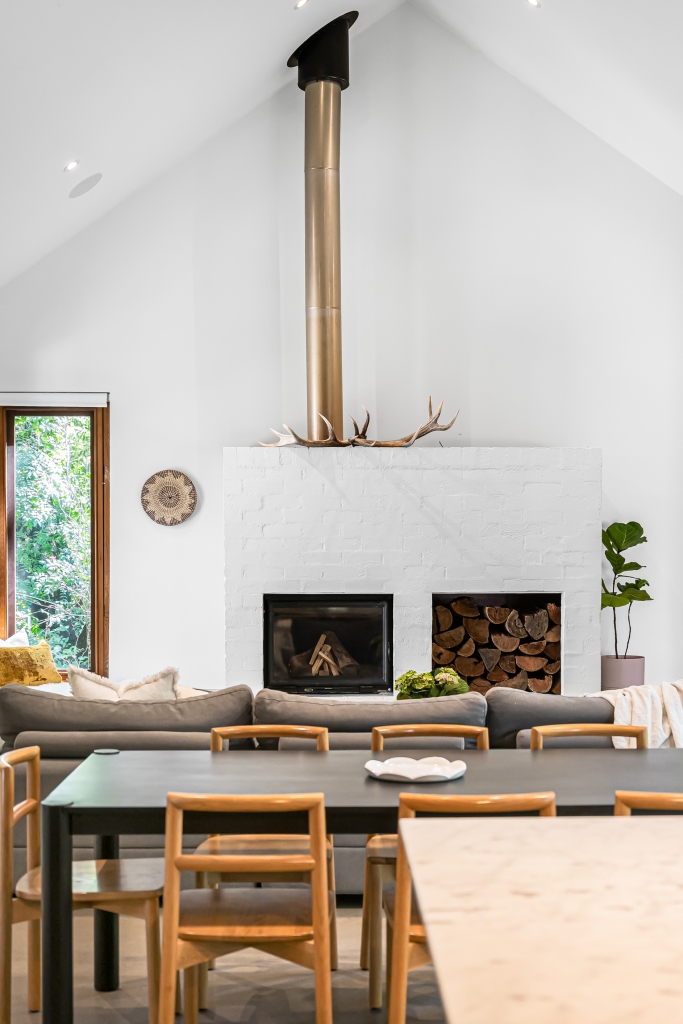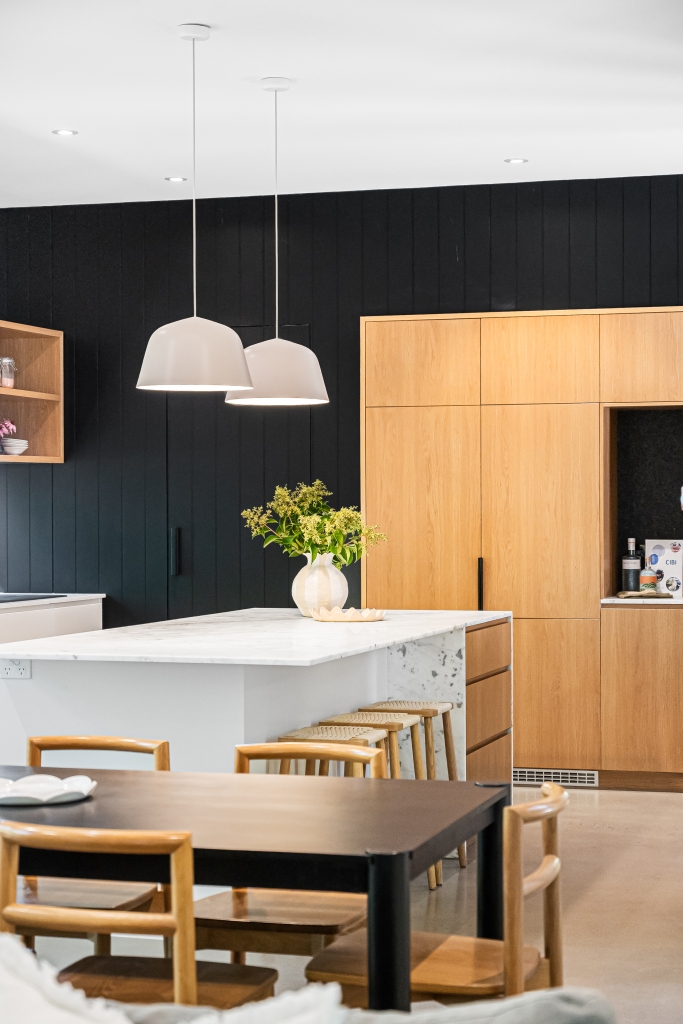One half of local design and build group Urban Habitats, Josh Semmler, found solitude in this Hills home.
WORDS: Stephanie Ockenden | PHOTOGRAPHY: Kirsty Burns and Zoe Coates @ Clique Creative

Conjuring childhood memories of fairy gardens and treehouses, this Crafers property is something out of a dream.
A modern-day farmhouse, the prized Urban Habitats home was built eight years ago, although its unique contemporary design seems much more recent. Walking down the long, pebbled driveway from the top of the road provides a stunning view, with tall green whispering trees lining the way.
The Adelaide Hills property is home to Urban Habitats director, Josh Semmler, his wife, Clém, and children, Louis, aged 10, and Elise, aged seven. Purchasing the site almost 10 years ago, the family’s criteria was a semi-rural property that was an easy commute to Adelaide.
“We wanted to experience the feeling of switching off from work and our daily lives – a sense of escapism,” says Josh.
The build had a number of challenges, as most sloped sites do, but working with experts in the industry does come with benefits – “we addressed the challenges [presented by the sloping block] with steps and created a big thermal mass through the concrete with hydronic heating – it provides all of the heat for the house, which is amazing given how cold it can get up here,” says Josh.
“We tried to stay true to the Urban Habitats ethos and build in a manner that is financially responsible and sustainable – working with passive design principles – and as a result, we don’t have a power bill in summer.”


In the world of architecture and design, natural light is king and this was a key focus for Josh. “Fundamentally, the driving point of our design was to orientate to the north to get morning, midday and late afternoon sun. We included a courtyard in the middle to let sun in through the windows down the back.”
Mixing materials in the design of the home also created a visual contrast with sleek iron doors, timber decking and white bagged brick to the exterior. The location and measurement of every window in the home was carefully planned to frame and capture the outside view – from the kitchen to the bedrooms.
“When you lay down and read from the bed you can look out of the window and feel as though you are in the tree line,” says Josh. “It gives the feeling of space too – the house feels much larger than its 250sqm footprint.”
Josh describes the style of the home as a “Scandinavian modern farmhouse” and one of the first of its kind to appear in South Australia. “I think when you’re in the industry you’re always taking tips and cues from everything else you do, but this style wasn’t as predominant in Australia as it is now. It has very much stood the test of time, which is a sign of good design and architecture.”


The interior of the home follows suit with this minimalist style and use of natural textiles, described by Josh as “functional simplicity”. The kitchen features a large marble island bench and is the heart of the home for the family.
The living space is sleek and timeless, and one of Josh’s favourite pieces in the room is his Armadillo rug, both due to the nature of the rug and his personal connection (his cousin Jodie Fried, is one of the founders).
A director of Urban Habitats for almost 10 years, Josh, and fellow director, Jock Merrigan, have worked together for well over that amount of time and have seen the business grow substantially in recent years, with the duo now employing more than 25 staff. “We certainly have some great relationships, repeat clientele and excellent endorsements and referrals, which is the really strong part of our business,” says Josh.
Offering the full new-build experience – from design to construct to landscaping – is the company’s unique offering.

A rare benefit to arise from the global pandemic was this end-to-end model where the business worked hard to get the best solutions at a consistent level and delivered on time.
“It’s a model that’s evolved over the past five years and disrupted the status quo because of the way that people now look at building a relationship with their builder, who is also the architect, the delivery partner and the landscaper, and they can just go to the one place for that relationship now,” says Josh.
A business staying true to their ethos, the Urban Habitats team is focused on “connecting with clients and developing trust to create a consistency of language and a consistency of detailing,” says Josh.
“What we’d love as an outcome is for people to be able to walk into a home and notice it is an Urban Habitats home, but without looking the same every time.” His timeless Crafers farmhouse does just that.

